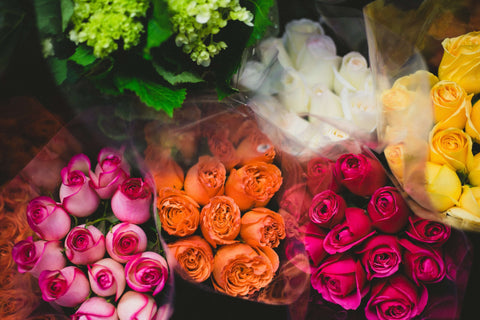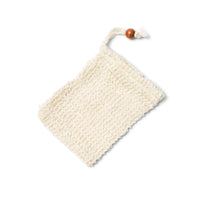
It’s almost Mother’s Day, and it’s time to express your gratitude. We challenge you to skip the cut flowers this year. Fresh flowers are fabulous to keep around the house, it’s true. But they are worse for our natural home than you may realize. Your mom will surely appreciate the extra thought you give to bringing home an eco-friendly gift.

Why are cut flowers so bad for the environment?

Why are cut flowers so bad for the environment?
Most of the cut flowers sold in the US are imported from Colombia at 70%. An additional 10% are imported from elsewhere. The remaining 20% are grown in the US.
Obviously, imported flowers have a short lifespan, so they must travel very far distances in cold temperatures at a fast pace to reach their point of sale. That transportation dilemma leads to a series of related issues.


- Imported cut flowers have a huge carbon footprint
Since cut flowers require air transport, their carbon impact is much higher than that of goods that can be shipped by a slower cargo ship. Anywhere from roughly 7 to 35 flights bring imported flowers to the US each day, depending on the demand and the season. For every 100 million roses, about 9,000 metric tons of CO2 gets emitted. That’s almost one ton of CO2 per 100 flowers!
Flowers also require refrigerated transportation to keep them fresh. Refrigerants are a known threat to the atmosphere because they leak HFCs, which are 1000 to 9000 times more harmful to the atmosphere than CO2.


- Growers and distributors apply toxic chemicals to imported cut flowers
Flowers are inspected at the border for insects, but not for chemicals. This means farmers may do whatever it takes to improve the chances of passing these inspections.
Some flower importing farms apply chemicals which are banned in the US. Roughly one-fifth of the chemicals that developing countries use on the banned substances list in the US.
These chemicals are not regulated like the pesticides used in food production since flowers are not intended for ingestion. As a result, cut flowers have a much higher level of chemical residue than food.


-
It wastes a lot of fresh water to grow flowers
Flowers are water-intensive crops. Almost 2.5 acres of a flower farm consume an estimated 3000 cubic feet of water per month

- Cut flowers don’t last long and produce waste
Obviously, not all flowers are sold before they lose their luster. Those unused flowers go to waste. Oftentimes cut flowers are also wrapped in shiny single-use plastic packaging, which also gets tossed into the landfill.
How to choose sustainable cut flowers
- Search for locally grown seasonal flowers
Depending on your region, you might have to get creative. Consult with a local flower grower at your farmer’s market to discover the best flower varieties for May. The Slow Flowers database offers an easy way to contact a local flower farm. As you get to know the farm your flowers come from, you can share the local details with your mother.
- Choose eco-certified flowers
A variety of labels on flowers ensure that either your flowers were grown more sustainably with considerations for pesticide and water use, such as Veriflora and Floraverde. The Fair Trade certification ensures improved working conditions. Meanwhile, the Rainforest Alliance certification on flowers ensures that the crops didn’t contribute to deforestation. Finally, the American Grown label is a good choice for finding locally grown flowers. Luckily these labels are fairly common at familiar stores like Whole Foods and Costco.
Try these Heartwarming Alternatives to Cut Flowers
Finally, there is no need to cut flowers in the first place. A much more sustainable and eco-friendly approach is to keep the flower idea in mind, but avoid plucking them from their roots. We’ve compiled the following gift ideas to get your creative juices flowing.
- Potted Butterfly-Friendly Flowers for the Garden
- Organic Wildflower or Heirloom Rose Seeds
- Perennial Bulbs that Bloom Each Year
- Herb Planters for the Window Sill
- Endemic Tree Sapling for the Backyard
- DIY Dried Flower and Twig Wreath
Sources:





